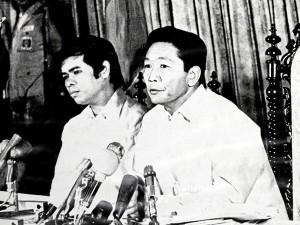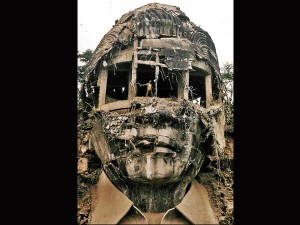
What are our children learning about martial law from their history class?
Selective memory might make the older generation remember martial law for its most enduring effects on them, but today’s youngsters get their glimpse of that era in recommended doses through their Araling Panlipunan textbook. The subject is taught to high school freshmen during the fourth quarter of the schoolyear.
“We focus on the facts, what happened during that period and the experiences of the Filipino people during martial law,” says Dept. of Education’s Rosalie Masilang of the Curriculum Development Division of the Bureau of Secondary Division.
Teachers are free to use various techniques in discussing martial law, she adds. “It depends on the teacher’s creativity,” she says. Some teachers use videos and documentaries, others use photographs, while others assign students beforehand to conduct interviews with older relatives who may have experienced martial law first-hand.
“We also ask our students to think critically about these events. We ask them: Do you think these actions were right? Do you think they were in accordance with the law? After all, the goal of the subject is also to teach students to think critically,” adds Masilang.
Although only public school students and their teachers can have access to the “Araling Panlipunan” textbook, SIM got the verbatim text on martial law as provided by the Bureau of Secondary Education through DepEd Communications Director Tina Ganzon.

Here are two excerpts from the original seven and a half pages on the topic:
“Naghahatid ng takot hanggang sa ngayon ang alaala ng Batas Militar sa isip at puso ng mga mamamayang Pilipino na nakasaksi at nakaranas ng hapdi at kalupitan dulot ng diktatoryal na pamahalaan ni Pangulong Marcos.
“Maraming kalunus-lunos na pangyayaring naganap matapos ideklara ang Proklamasyon 1081, mga mamamayang inusig at ikinulong, ang iba’y naglaho at hindi na natagpuan at maraming buhay na nabuwis at nasayang.
“Iyan ang nagawa ng Bagong Lipunan, naging produktibo ang pag-unlad ng ekonomiya sa ilalim ng batas militar. Napangalagaan ang ekonomiya ng bansa sa tuluyang pagbagsak bunga ng pandaigdigang krisis sa langis noong 1973. Nabigyan ng pag-asa ang mga Pilipino para sa pag-unlad.”
(“…The memories of martial law still bring back fearful memories in the hearts and minds of Filipinos who witnessed and experienced the cruelty and suffering brought about by the dictatorial Marcos regime.
Many horrific events followed the declaration of Proclamation 1081, including the persecution and imprisonment of citizens, some of whom disappeared and were never found. Many lives were lost or wasted.
…Under the New Society, however, the economy became productive and developed. The national economy managed to stay afloat despite the global oil crisis of 1973. Filipinos were given hope that progress was eventual.”) •
Kate Pedroso and Schatzi Quodala, Inquirer Research

